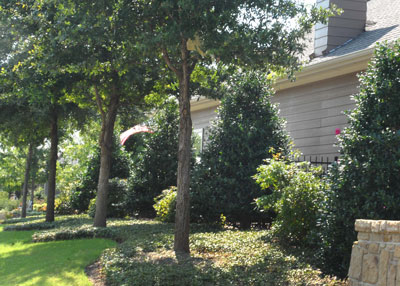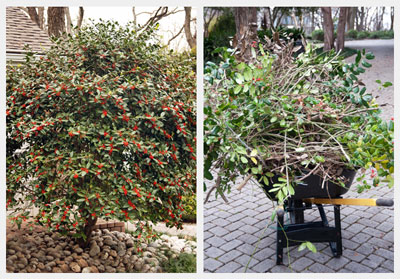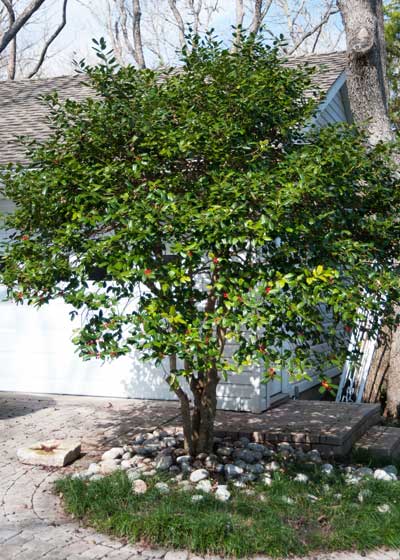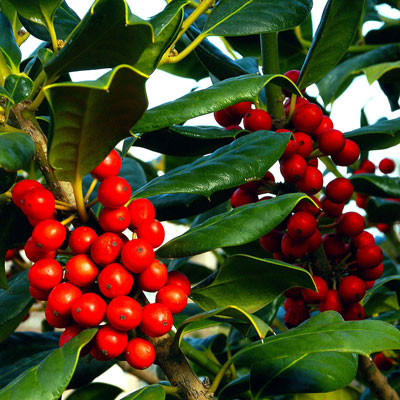Plant of the Month: December 2014
by Neil Sperry
Nellie R. Stevens holly
When Steve Dodd Sr. gave me a ‘Nellie R. Stevens’ holly in the fall, 1970, it was love at first sight. I had just returned to Texas after six years “abroad” (Ohio). And in those six years, this plant had hit the mainstream of southern horticulture. I’d never seen it when I transferred from Texas A&M to OSU in 1964, yet it was becoming really common when we moved to Dallas just six years later.
The plant originated from a chance seedling from seed collected at the United States National Arboretum in 1900. Three seeds were collected off a Chinese holly mother plant, and since there was an English holly alongside, it was given credit as being the father.
The lady who collected the seeds took them home to her garden in Maryland. She grew them until 1954, when they were observed, named and introduced by grower G.A. Van Lennep, Jr. – named for the lady herself: Nellie R. Stevens.
Now, 114 years after she collected the seeds, the plant that bears her name is one of the South’s finest large shrubs or tall screening plants.
‘Nellie R. Stevens’ hollies grow to be 20 feet tall and 12 or 14 feet wide, although they can be kept at two-thirds that size with pruning. Their 3-inch, extremely dark green leaves are the perfect backdrop for their giant (for a holly) red fruit each winter.

If you’re using ‘Nellie R. Stevens’ hollies as a part of your home’s landscape, be sure you allow enough room for them to grow unencumbered. Plant them 8 or 10 feet out from the corners of your house and out from beneath the eaves. They do equally well in sun or shade.
If you’re using ‘Nellie R. Stevens’ as a visual screen that you’ll allow to grow to full mature height, space them 12 feet apart. (Two-thirds as far apart as you’re going to allow them to grow in height.)
‘Nellie R. Stevens’ plants are readily available at local nurseries, in sizes ranging from little starter plants in 5-gallon pots all the way up to 12-foot mature specimens in nursery boxes. Plant them into good garden soil, and above all else, hand-water them every 3 or 4 days for their entire first two years, just to be sure they never dry out. Lack of moisture as they are getting established is almost the only way you can fail with this fabulous shrub.

Finally, on a personal note, the plant you see laden with fruit and with river rock at its “feet” is a large shrub that I finally decided needed to be converted into a small tree-form corner plant along our garage. With a little judicious pruning and 30 minutes of light labor, it gave that corner an entirely new look. I thought you might enjoy seeing the results. That was 18 months ago, and it looks still better today.


